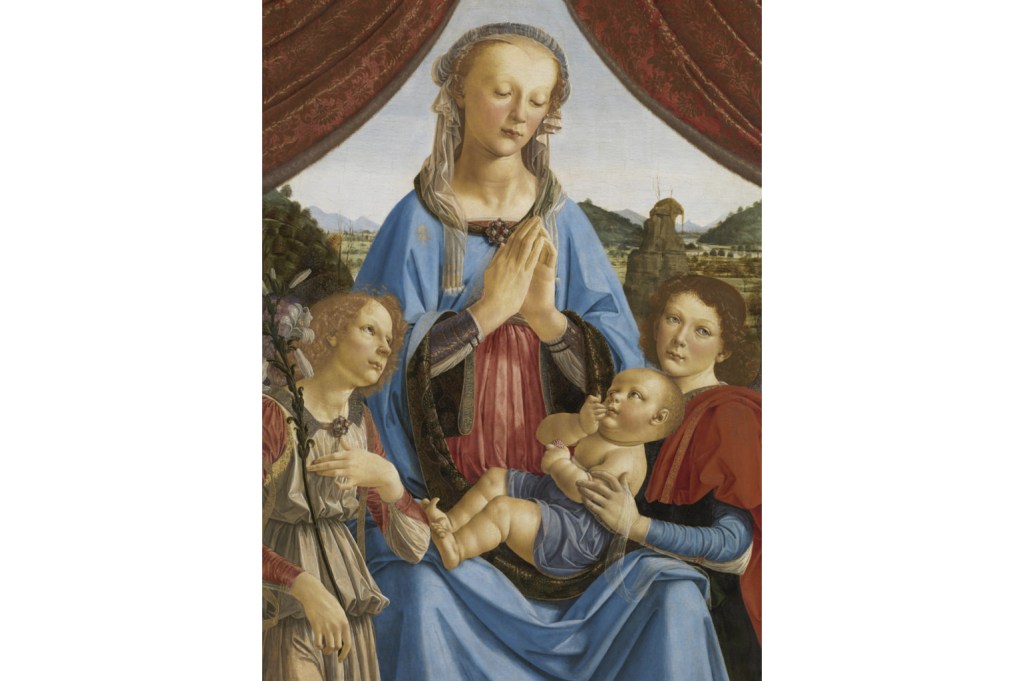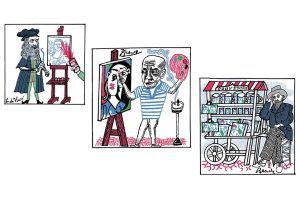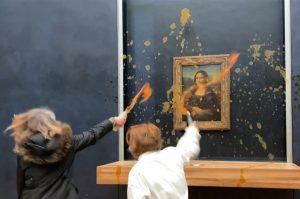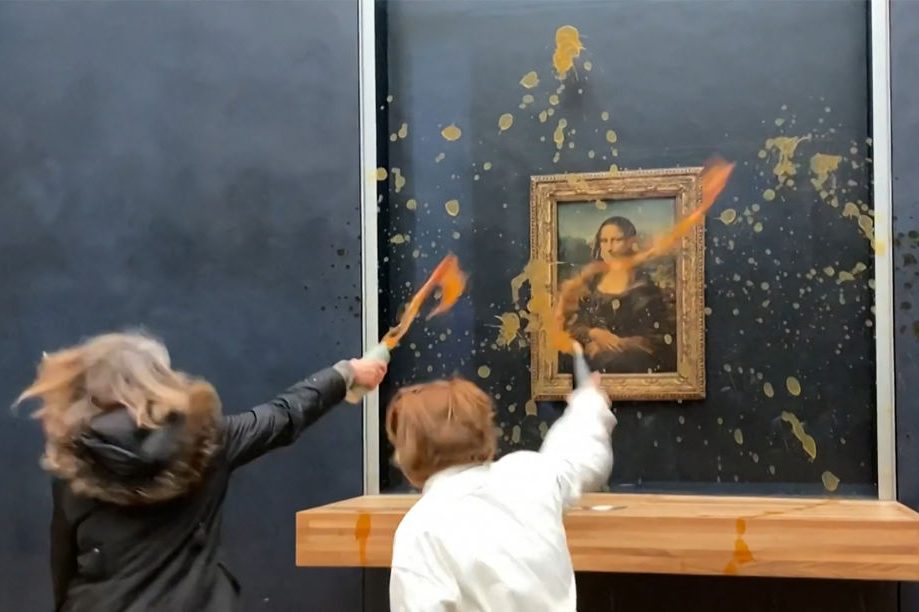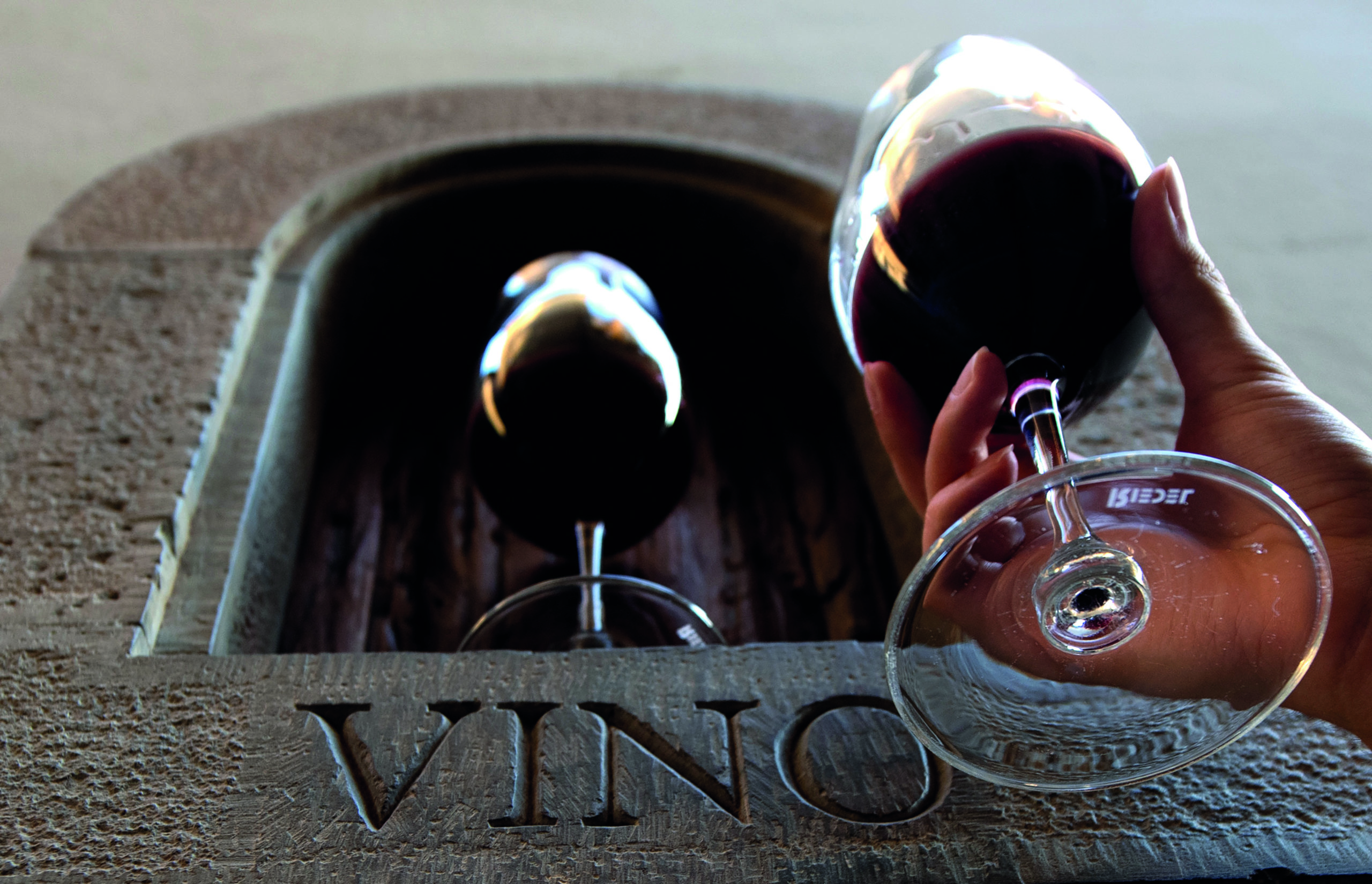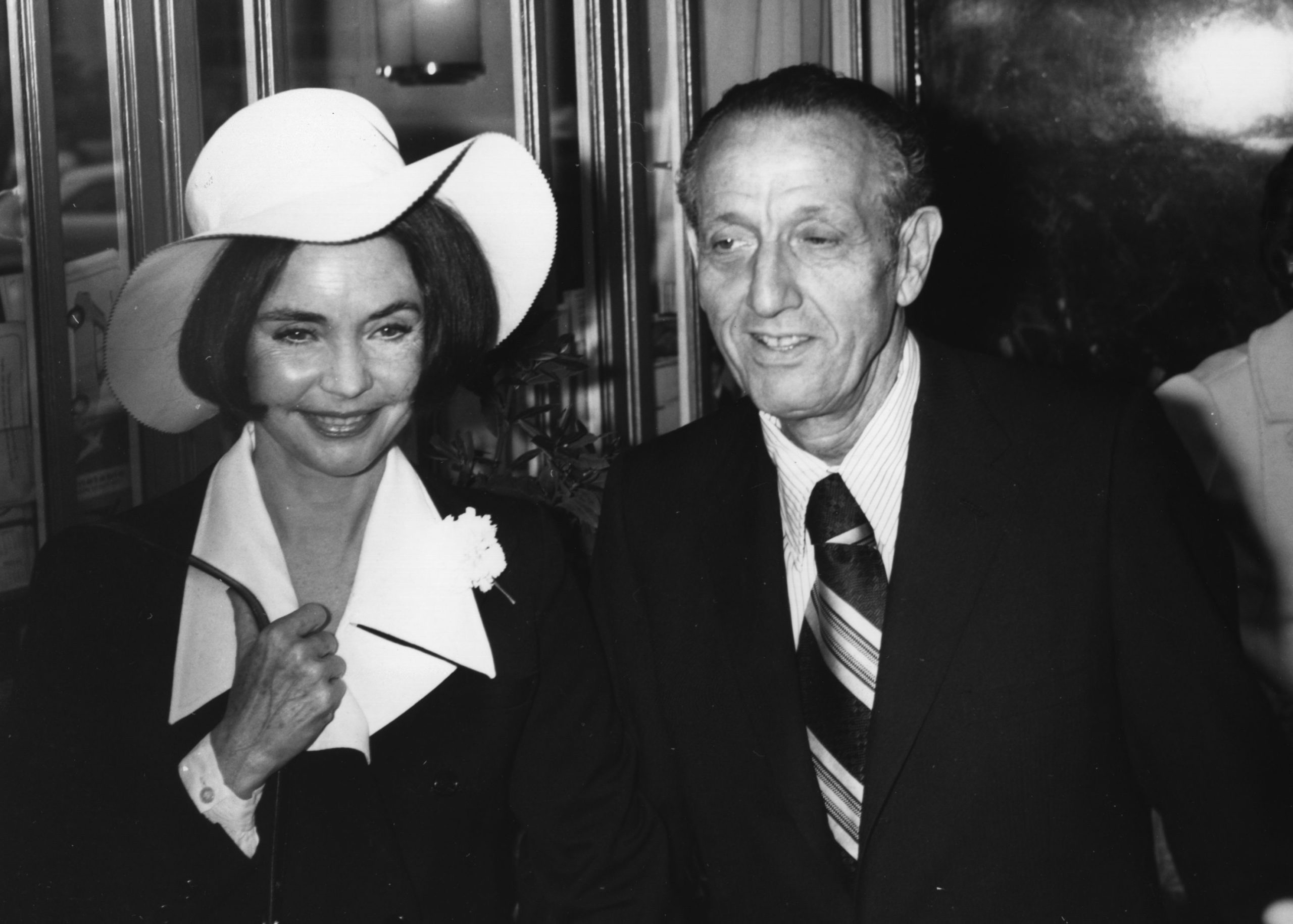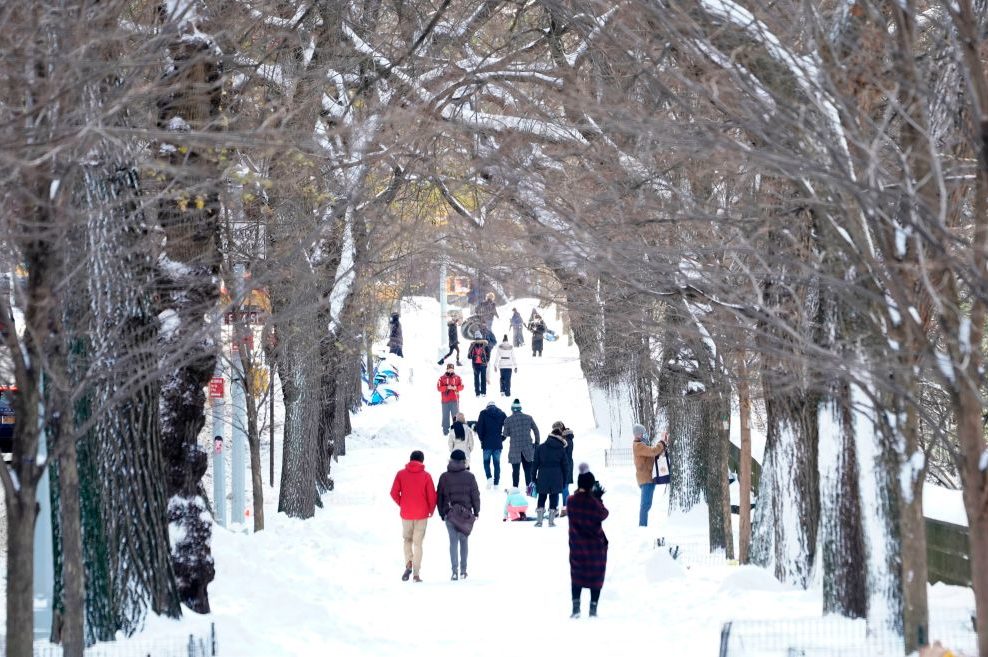This article is in
The Spectator’s October 2019 US edition. Subscribe here.
At last, some justice for the ‘teacher of Leonardo da Vinci’. Verrocchio: Sculptor and Painter of Renaissance Florence, now at the National Gallery of Art in Washington, DC, reveals that this master was more than a mere footnote to his famous apprentice. Born around 1435 into the artistic boomtown that was Florence under the Medici, Andrea del Verrocchio may, in fact, have been the original Renaissance man. The greatest artists of the Florentine Renaissance took root in his studio and grew out of his mentorship: not just Leonardo, who stayed with
him for over a decade, but also Pietro Perugino, Lorenzo di Credi and, most probably, Domenico Ghirlandaio and Sandro Botticelli too. ‘Of the three main founders of the High Renaissance — Leonardo, Michelangelo and Raphael,’ says exhibition curator Andrew Butterfield, ‘Verrocchio taught one and trained artists who taught the other two.’
The first monographic exhibition of Verrocchio in the United States, the show makes the case for the maestro’s own artistic achievements and helps explain why everyone else came to follow him. From carving in marble to casting in bronze, molding in terracotta to painting in oil, Verrocchio worked with sumptuous precision across artistic media. A goldsmith by training, he learnt to paint from Filippo Lippi, and created art ‘cross-platform’. Something extraordinary happened as Verrocchio crossed those platforms, for a spark of inspiration leapt from one to the other.
Somehow, from his experience modeling sculptural form in space, Verrocchio found new ways to render sculptural form in paint, using a new mode of smoky shading called sfumato. Verrocchio’s innovation, first explored in his own drawings and paintings and subsequently brought to perfection by his apprentice Leonardo, changed the course of Renaissance art, and opened the window to the dramatic plays of light and dark in the chiaroscuro of the Baroque. With some 50 sculptures, paintings, and drawings on loan from nearly two dozen institutions — including some, but not all, of Verrocchio’s masterworks — this exhibition tempts us to explain just how Verrocchio did it.
In his own time, Verrocchio was best known as a sculptor. He could be as equally adept in the vastly divergent practices of carving in stone as casting in bronze. Although his most famous sculpture and the one that made his reputation, his ‘Christ and Saint Thomas’ (1467-1483), remains in the Orsanmichele in Florence, there is at least one bronze here that alone requires a visit to Washington: ‘David with the Head of Goliath’ (c. 1465), on loan from the Bargello. This is arguably the third most famous ‘David’ in Florence — which is still saying something in a town whose artistic Goliaths cast and carved a tribe of Davids.
Verrocchio’s ‘David’, created after Donatello’s ‘David’ and before Michelangelo’s, connects the other two, enlivening the ephebic forms of Donatello while hinting at the muscular power of Michelangelo to come. Verrocchio’s might be the most human of these three Davids. His body is strong but slight, and genuinely adolescent. Unlike the other two, he wears body armor, and here the one-time goldsmith produces an amazing play of surfaces between David’s exposed shoulders and his finely hammered and detailed cuirass – all miraculously rendered, we must remember, in the same ball of wax. And this David, unlike the other, rather gazey ones, seems to know just what he has done. You can see it in his face. There he is, standing over the severed head of Goliath, beneath a thick halo of curls, betraying the most human of smirks.
This particular human quality, a shared sense of earthly recognition, continues through Verrocchio’s works in marble. ‘Bust of a Young Woman’ (c. 1470) on loan from the Frick Collection, and ‘Lady with Flowers’ (c. 1475-1480) from the Bargello in Florence, may be less dynamic than his contrapposto ‘David’, but again the faces and necklines, framed by finely tooled hair and exquisitely rendered clothing, seem to describe figures that are living, breathing, and thinking. They cock their heads. They curl their lips. While the ‘Young Woman’ raises her eyebrows and pulls back her head in skepticism, the ‘Lady with Flowers’ looks forward with glassy, affectionate eyes as she flutters her fingers in anticipation. The expressions are subtle, but the results are present and felt.
It helps that one of Verrocchio’s innovations was to conceive of his sculptures in the round. His ‘Putto with a Dolphin’ (c. 1465- 80), from the Palazzo Vecchio in Florence, may not be as uncanny and ‘real’ as his portraits. But this crowd favorite, his bambino di bronzo, twists and balances on one foot so there is no obvious front, side, and back. Rather, the sculpture draws the eyes up and around in the same way the pudgy-winged baby twirls up, bearing his tiny dolphin.
These works are complemented by additional sculptural pieces, in the round and in relief, ranging from silver to unbaked clay, or terra cruda (‘raw earth’). Yet if we are to isolate Verrocchio’s most innovative achievements, we must turn to his works on paper. Verrocchio’s new abilities in shading are revealed by ‘Head of a Woman with Braided Hair’, a drawing from the late 1470s in black chalk or charcoal, lead white gouache, and pen and brown ink, loaned from the British Museum. Verrocchio developed away to blend his shadows, most significantly around the mouth and cheekbones, into an infinite gradation of light to dark, giving effects quite unlike the staccato marks of parallel hatching and crosshatching, or the rough variation of different pigments.
Where did this all come from? There was clearly something extraordinary in Verrocchio’s appreciation of sculptural space that informed his innovations in two dimensions. I like to think that his feel for modeling in bronze gave him a new sense for pictorial touch. After casting in wax, Verrocchio worked his bronzes over to polish them to life. The resulting ‘human’ surfaces, with their subtle reflections of emotion in the brow lines, cheekbones and lips, emerged from this inhuman and laborious process. Similarly, in two dimensions Verrocchio developed a method of smoothing the shadows of dark pigments by hand. His drawn features take on the same rubbed expression as his sculptures, depicting gradations of shadow in the exaggerated way that light reflects off of polished metal. These developments were unlike anything that preceded it, and they went on to revolutionize painted form. Calling him a ‘fountain’, his contemporary Giovanni Santi claimed that, ‘whatever painters have that is good, they drank from Verrocchio’s spring’.
Unfortunately, just which of Verrocchio’s paintings were painted by Verrocchio — or rather by his assistants, some famous, some not — remains a matter of speculation. Perhaps more unfortunately, ambitious attribution has encouraged some seriously irresponsible connoisseurship, as otherwise sensible art historians have undertaken vision quests to find Leonardo’s fingerprints in this or that corner of the compositions to come out of Verrocchio’s studio. You could spend a lifetime poring over ‘Madonna and Child with Two Angels’ (c. 1470-74), a loan from the National Gallery in London, and still not know for sure which parts were painted by Verrocchio, and which by Perugino, the dutiful Lorenzo di Credi, or some other studio schlub, and not pure Leonardo. Fortunately, this exhibition avoids such frenzied speculation, and there is one Leonardo painting here, ‘Ginevra de’ Benci’ (c. 1474-78), from the National Gallery’s own collection, that helps reveal the pupil’s debt to his teacher — while also satisfying the crowds.
It is thanks to Leonardo, of course, that we can now see Verrocchio in Washington at all. Along with major exhibitions at Buckingham Palace and the Louvre, this is but one more exhibition occasioned, in this case albeit indirectly, by the 500th anniversary of Leonardo’s death. The genius cult of Leonardo is a postmodern mystery religion, with millions worshipping at the rope lines before the ‘Mona Lisa’. But my, with that smirk, doesn’t she look just like a Verrocchio?
This article is in The Spectator’s October 2019 US edition. Subscribe here.



